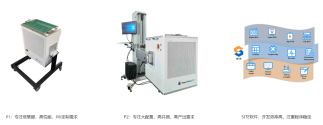Where was this picture taken? Was it in China itself? It looks like wolfspeed has many Asian staff.
View attachment 152717
At least they can go back to China when all is said and done.
Where was this picture taken? Was it in China itself? It looks like wolfspeed has many Asian staff.
View attachment 152717
a look at XRING-01's CPU, GPU and ISP. So, it has also developed its own 4G modem called XRING-T1.
I think given what it has done already, we can put Xiaomi better at chip designing than Unisoc.
Now, if it can develop a competitive 5G modem, then that would be another huge leap for their design team.
Let's see if they can develop lower cost 5G chips so that they can use their own designed chips instead of Helio SoC from Mediatek
None of this is saying Xiaomi is better at semiconductor than Huawei! Nobody here is suggesting that.
I'm not making this judgment based on the modem, but rather the full chip they have developed.5G is several orders of magnitude more difficult, and Unisoc has 5G.
Unisoc is a much smaller company, probably have much less project funding, and more uncertainty of profitability for their new chip, since they need coustomer for their chip. Xiaomi on the other hand can just simply use their chip for their own product, phones and tablets and watches etc.I'm not making this judgment based on the modem, but rather the full chip they have developed.
It's unclear why Unisoc hasn't even attempted to develop a competitive flagship SoC, but that is their decision.
Since they lack such a product, it makes me question what they are capable of designing.

I think they do this on purpose. Their design is not bad. Their chips performance is comparable to any other chips that use the same ARM-stock-cores and the same fab process. It's just that they never use the latest or even the second-latest TSMC fab process. If they were to produce a chip using the same ARM Cortex cores, and the same TSMC fab process as this Xiaomi chip then the resulting performance will not be that different (of course there will be some differences). Their most advanced chip currently use 6nm.It's unclear why Unisoc hasn't even attempted to develop a competitive flagship SoC, but that is their decision.
Since they lack such a product, it makes me question what they are capable of designing.
